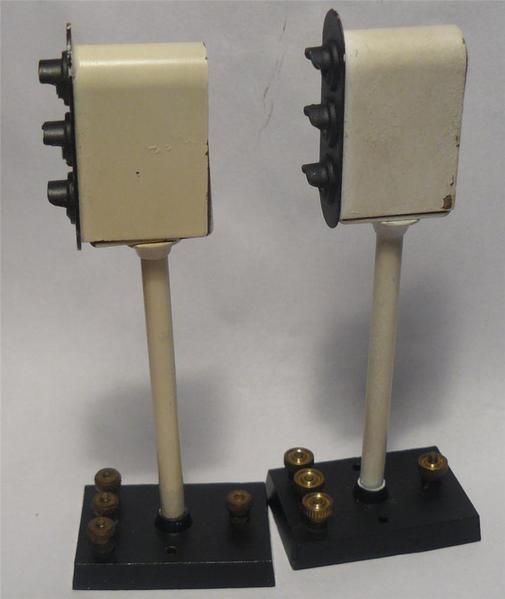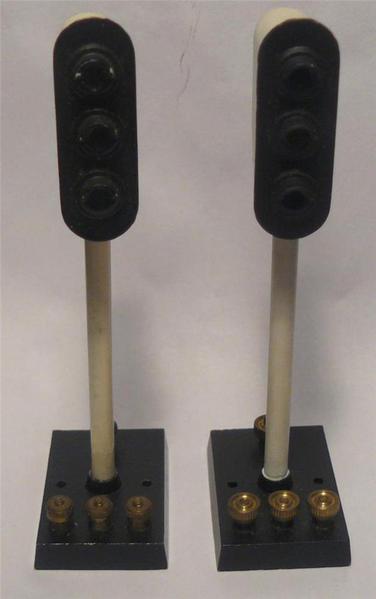Have had these block signals for a few years, never knew who made them. I have three of them, just took these two off the layout to make room for the Flyer signals I rebuilt. The other one is still on the layout. I like them a lot.
I first thought they were home made, but they are all very uniform. Thought maybe German, but the Base measures exactly 1-1/2" x 2" x 1-1/2", doesn't look metric.
They are 9" tall. The base is wood, with a hole bored into the bottom. Brass wiring connections screwed to the wood base. The wooden base has a strip of fiber-board carefully recessed into it and screwed to the bottom, presumably for fastening down to the layout, that's how I used it. The pole is a piece of brass tubing, soldered at the top to the brass head. The head has a wooden plug in the back, held in with the setscrew at the top; again, the wiring connections are mounted in the wood. Paint is flaking pretty good off the brass. Faceplate has some pretty heavy white paint.
Any ideas?








